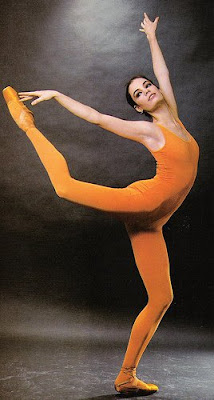 |
| Teaching at the Bates Dance Festival, U.S.A. |
 |
Teaching Spiraldynamik Dance in Beinwil am See
|
For years I convinced myself that the goal of my ballet school was to produce dancers…..lately I’ve tended to revise that goal. I’ve realized that I am actually more interested in using the “school of dance” to help contribute healthier, more responsible citizens to our society.
I know, through my own experience, that when a child is determined to be a dancer (as I myself was) she/he will find the manner to make that dream come true. Through my studies of dance education and Spiraldynamik and my own experience as a prima ballerina with Maurice Béjart, one of europe's most important choreographers in the late twentieth century, I will assure the students a strong base that will enable them to go in the direction they choose later on.
My goals for this school are:
- To build a non-competitive environment that forms PEOPLE WHO DANCE who are healthy in ego, body and mind.
- To create a love and appreciation of movement, rhythm and music in a playful and encouraging environment, respecting each childs physical and mental development.
- To explain and pass on the tradition of dance – with an understanding of where it’s coming from and an appreciation of where it could be going to, therefore creating respect for the art form.
- To be an equal-opportunity institution for children of all social backgrounds. Children coming from lower income households will have the same chance as those coming from more privileged homes to receive an education in dance. In order to be able to offer the same opportunity to all children, tuition is on a sliding scale, depending upon the econimical situation of the child’s family.
The school is aware of the importance of forming people who contribute to the society around them, whether the student becomes a professional dancer or not. The student learns to respect the growth process that is everyone’s right, including their own. This builds a self-confidence to accept weaknesses as a strength, to understand that too much strength can at times be a weakness. Through creative work, the student develops his/her inner person and learns to trust in their own intuitive strength. The building of trust between the teacher and students is recognized as a healthy growth factor in building self-confidence and a healthy ego.















